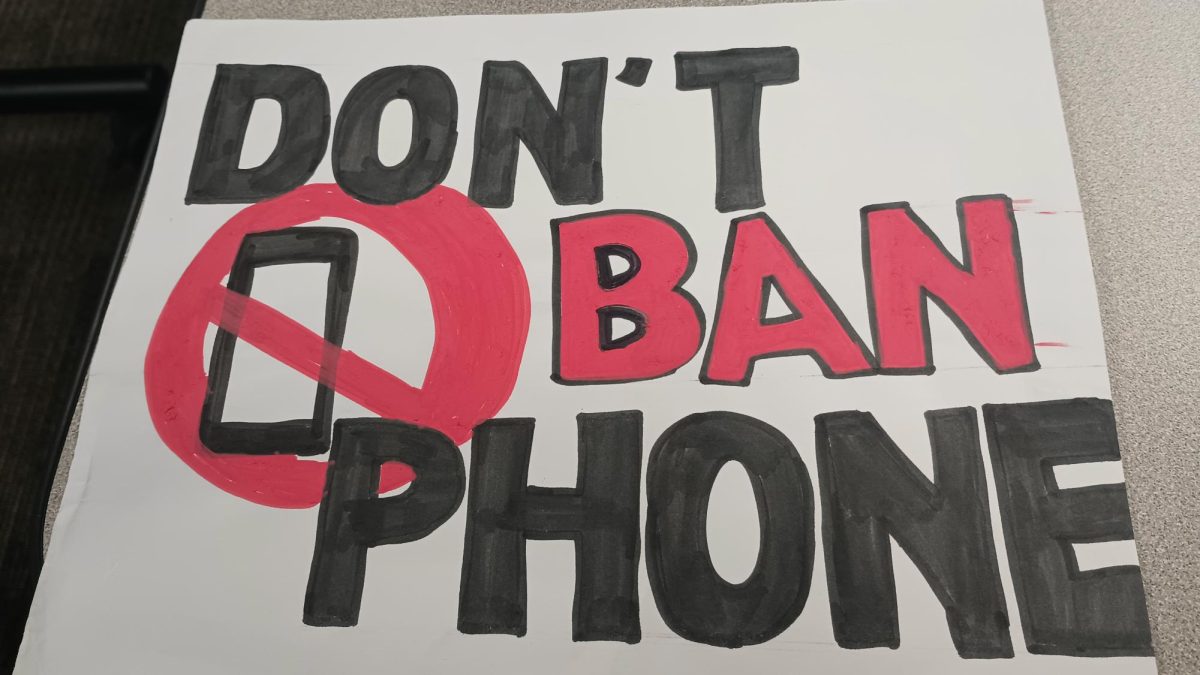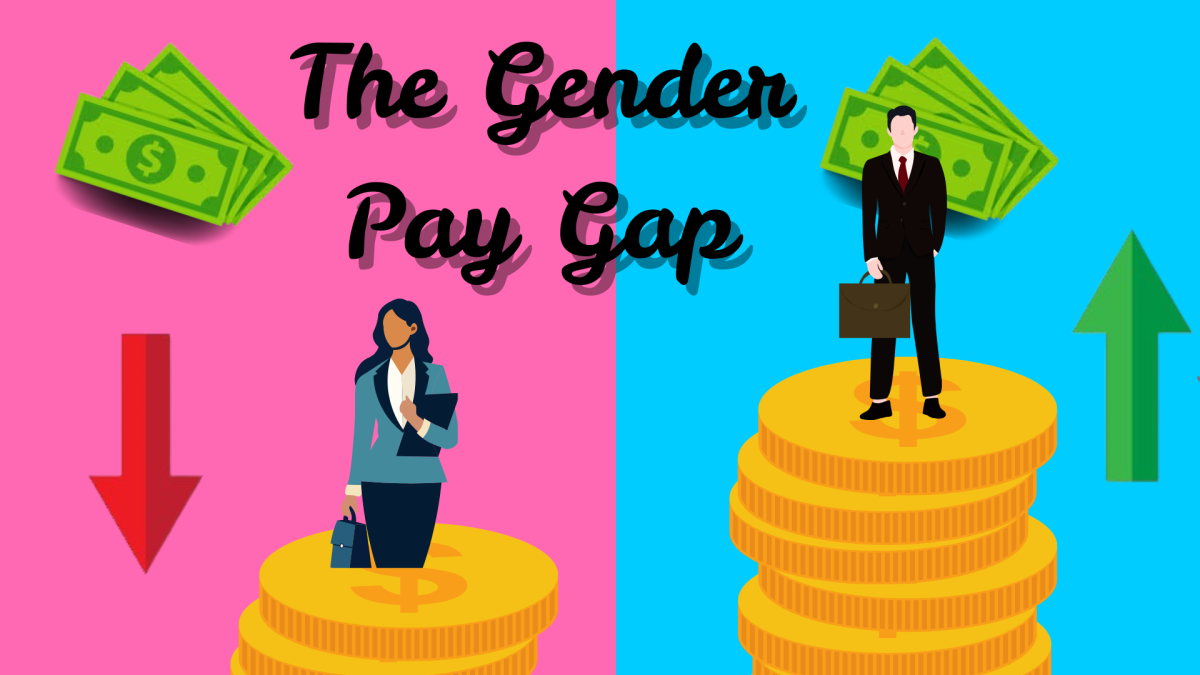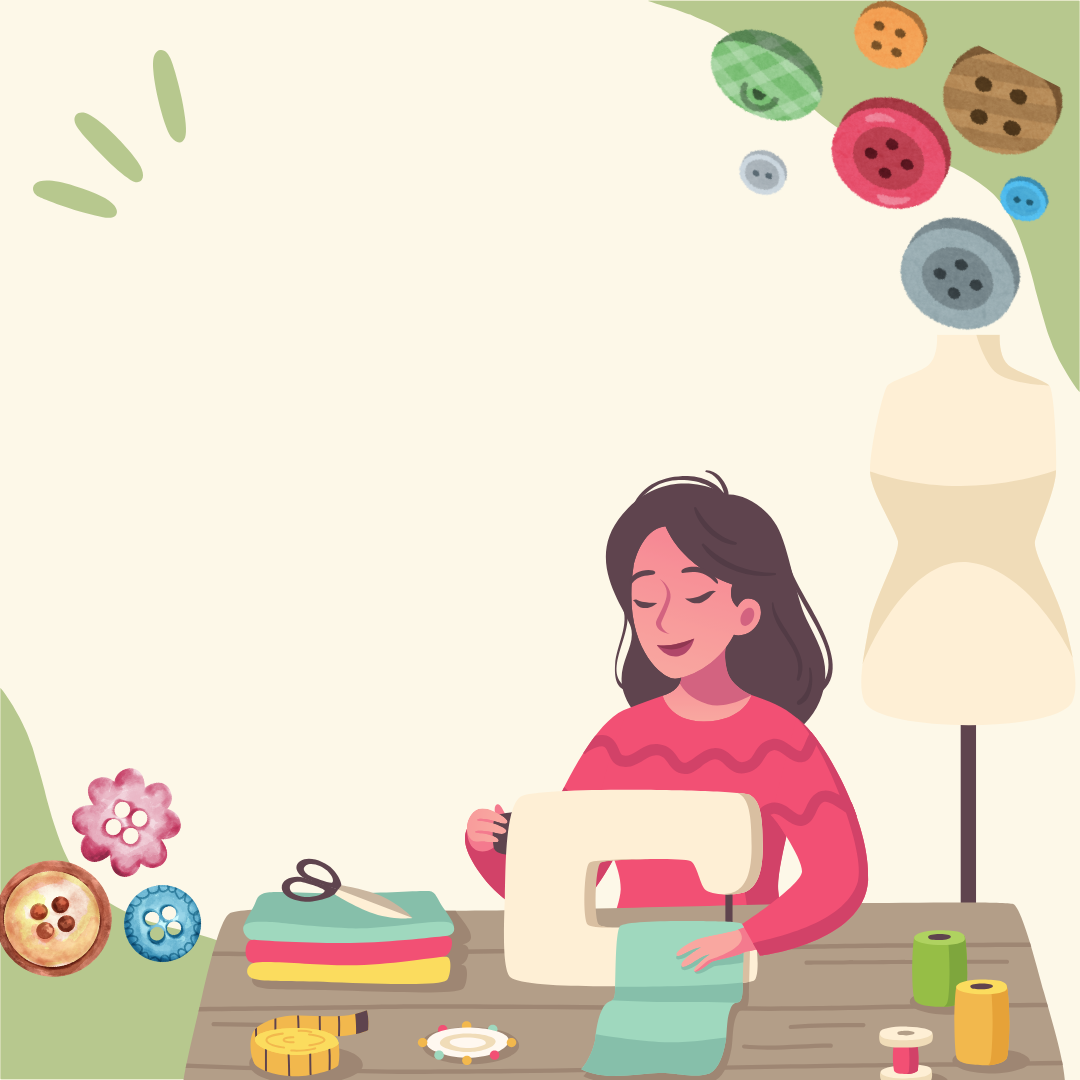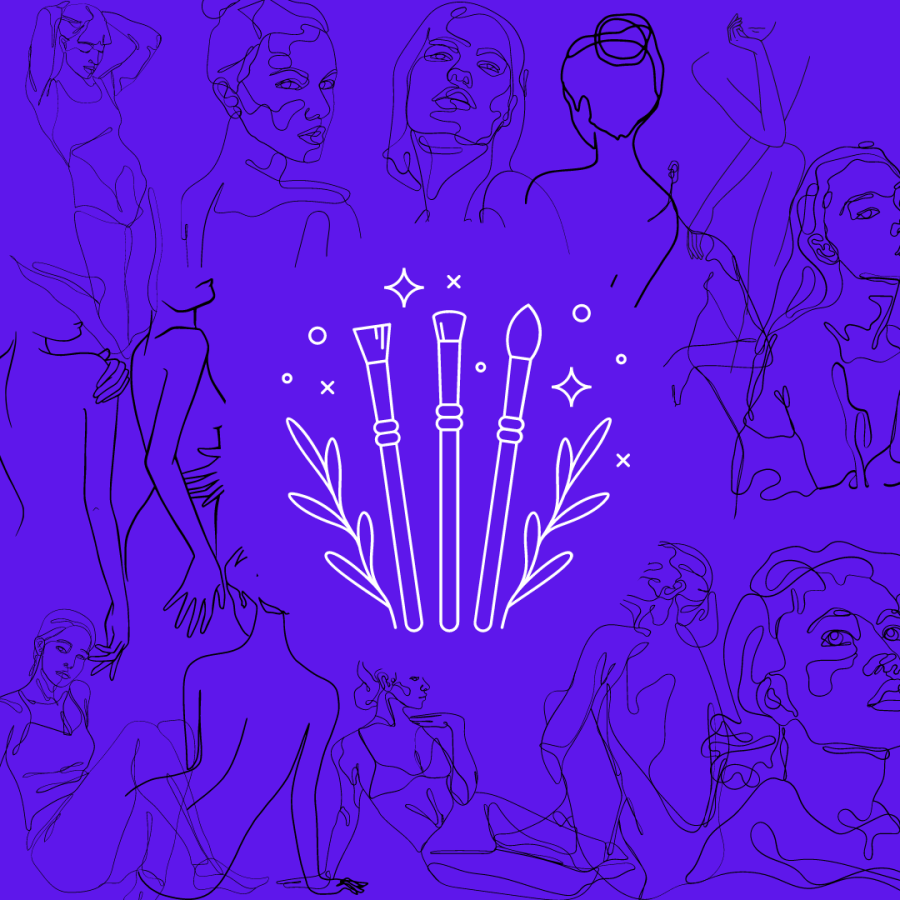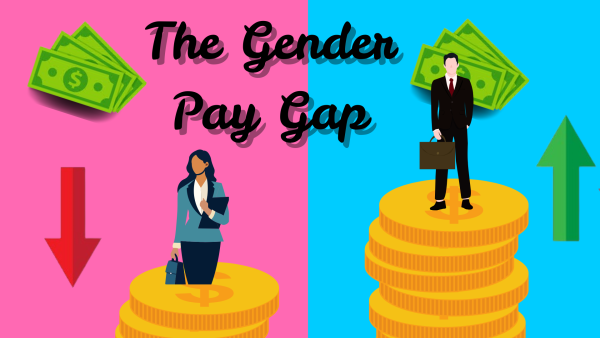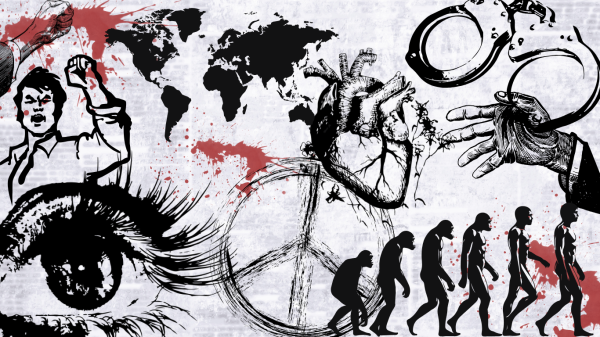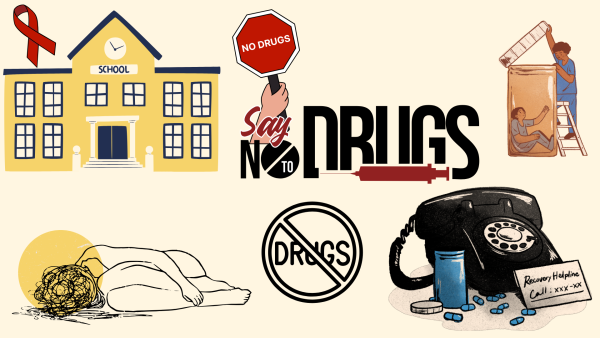The beauty standards: A constantly moving target
Made with Canva: Kimberly Lopez
You can never escape beauty standards and trends in our society; you can only change the way you view yourself and how you respond to them.
In May of this year, everyone was talking about Kim Kardashian wearing Marilyn Monroe’s dress to the Met Gala. What we didn’t focus on was the fact that three weeks before the event she lost 16 pounds in order to fit into the dress.
To lose this weight, Kardashian cut out all sugar and carbs from her diet and only ate fruits and vegetables. Along with that she wore a sauna suit twice a day.
In interviews discussing her unnecessary weight loss, Kardashian is proud of it. The way she speaks about it seems as if she is promoting disordered eating.
The glamorization of eating disorders in pop culture lessened for a while, but now it has made a comeback.
Within the last year, the Kardashians seem to be changing their appearance drastically. After years of having large hips, large butts, large breasts, but small waists, the Kardashians are changing their aesthetic. Now they are trying to be skinny while still maintaining curves.
The Kardashians are among the most prominent figures when it comes to beauty standards. They influence them and change to align with new trends. They have so much influence over society because of their wealth and status that what they look like affects the climate regarding beauty.
If you look at their plastic surgery over time, it is obvious that they have influenced the beauty standards and have been influenced by them.
According to Teen Vogue, “Beauty standards are the individual qualifications women are expected to meet in order to embody the ‘feminine beauty ideal’ and thus, succeed personally and professionally.”
Beauty standards have been around for nearly 2,400 years. They originated in Greece and Rome when beauty started to be seen as an “excellence, like honesty or bravery.”
In our society, Hollywood and social media determine what is beautiful and what isn’t. Both try to sell you the perfect body and the perfect face.
Overview of female body types over the past 100 years
Pop culture has kept a record of what has been considered desirable in the past. The ideal body type has changed drastically over time. The past century has been filled with changes and inconsistent expectations.
In the article “See How Much the “Perfect” Female Body Has Changed in 100 Years (It’s Crazy!)” Maria Hart identified eleven body types that represent the female ideal over the past 100 years.
The article showcases a variety of clever titles such as the “Hourglass” of the 50s, the “Waif” of the 90s, and most recently the “Booty Babe” of the 2010s. The names alone reveal how drastically the female ideal has changed.
The Hourglass of the 50s emphasized curves. Padding and wate-on weight gain supplements were marketed towards women so they could follow this trend. Elizabeth Taylor was the face of the Hourglass era.
The ideal 90s was thin, small, and glamorized bones protruding out from the skin. Kate Moss was the face of this era.
When the ideal changes so often and drastically, it is difficult to keep up and align oneself with them. This creates harmful expectations for women.
Hollywood decides trends
Historically, Hollywood has been one of the main deciders of trends. Recently, social media has joined Hollywood in its role of deciding what is beautiful and what isn’t.
Regardless of the medium, pop culture also decides the trends. Since marketing has gone overseas there is an international expectation of what a woman should look like. In most parts of the world the media bombards women with images of what they should look like.
Although this article focuses on the affect beauty standards have on women, they affect men too.
Katy McClintock, a hair and make-up specialist, has been working in Hollywood since the 90s. Having seen what goes on behind the scenes in Hollywood, McClintock shared her opinions.
She said, “I think people in Hollywood have more insecurities than what you call normal people. I think they’re similar in that they critique themself like any of us do, and I think they’re different in a way that’s more so that they know they’re being viewed and criticized by the public, while we just think we’re being viewed and criticized by our peers.”
McClintock said there are a few current pressures on celebrities about their appearance.
She said, “The number one thing is probably age and then probably fleeting trends would be second. For instance, things that are popular right now are eyebrows and butts.”
Most of the time, women are expected to be skinny, but that doesn’t seem to be the case lately.
McClintock said, “I don’t feel like there is a pressure to be thin right now, but I started doing this in the 90s and it was all the pressure to be thin. I do have to say that from the 90s to now, it was a pressure to be thin and waify, but now I feel like there is a pressure to have a thin waist and a large butt. It’s still thin, there’s still thin parts, but there’s also more voluptuous parts that people want to have, and that’s considered beautiful. I feel like it changes a lot, and I feel like it’s better now than it used to be.”
From the neck up there have been standards for women too.
McClintock said, “I feel like it’s better now from the neck up too because people embrace differences now more than they used to. I think that interesting faces are considered cooler than they used to be. Everyone was supposed to look the same and have the same color hair and be the same skin tone and the same body type, so I feel like it’s better now than it used to be because there’s much more that’s embraced and considered by the public to be beautiful.”
Although the beauty standard has been a set of rules for a long time, it has developed a looser meaning to people.
She said, “I can really only talk for as long as I’ve worked in it so I think the first Hollywood job I did was in 1993 and then until now. I feel like there’s less of a beauty standard. I feel like actors that I’ve worked with embrace what their culture is or what they look like more than they used to. I feel like before everyone would try to mold themselves into more like who was famous in the early 90s and now I feel like people are much more free and inspired to live up to their own standards or what they and their peers or culture think is beautiful. I think it’s better now.”
Paul Schilder and his research about body image
Now that we have established what the beauty standard is, what it looks like, how it is determined, and how it has changed, it is important to bring up Paul Schilder.
Paul Schilder was an Austrian psychiatrist who became interested in the psychology of beauty standards in the 1920s. He wrote many books about psychology; the most influential one is ”The Image and Appearance of the Human Body.”
In his book, he argued that “body image is not just a cognitive construct but also a reflection of attitudes and interactions with others.”
We create an image of what our body looks like in our head, and we view ourselves this way even when it may be incorrect.
Paul Schilder’s work opened up this field and raised awareness on this topic which led researchers to explore other topics about body image and self perception.
Why beauty standards can be harmful
As described, the ideal body type has changed significantly over the years. With how much these standards are forced on women, it is no surprise that women and young girls having low self-esteem and negative body image is common.
Low self esteem and negative body image can create an abundance of problems for an individual. They can create problems like anxiety, stress, feelings of loneliness, and an increased chance of depression.
Low self esteem can cause issues with friendships, romantic relationships, and academic or job performance. One of the most challenging parts about low self esteem is the increased vulnerability to drug and alcohol abuse.
If these issues are left unchecked, they can worsen. In some cases a negative body image paired with low self esteem can drive people to making big decisions about their appearance, hoping if their body changes they will too.
In these cases, people can go too far with surgery to escape what they really look like. There are many examples of celebrities and normal people who have gone too far with their surgeries and look worse than when they started.
People can end up torturing themselves when they aim for perfection. Even if someone ends up meeting the standards, by the time they’re content with their appearance, the standards have already changed again.
Plastic surgery
Plastic surgery is okay when done safely and correctly. When someone does it because they want to and no other sources have told them to, it can actually be helpful for self esteem.
Marcela Padilla, 46, said she got breast implants one year ago.
Padilla said, “It was trendy and everyone was doing it.”
Padilla feels content with her decision.
She said, “I felt no pressure and it was a choice of my own.”
Padilla feels like her self esteem has risen since her surgery.
She said, “I think that anyone can do whatever they want with their body. It’s their responsibility to take care of their body, so if they want to, I support them.”
Plastic surgery becomes an issue when it is used to constantly keep up with standards or completely change one’s appearance.
If you want to get plastic surgery, you should do it the right way and make sure it’s safe. Make sure your surgeon is certified and that they think it is safe.
Since it is a big decision, you should take time with it and reflect on how it will impact you and your life. It should be treated like a big decision so when it’s not, there is an issue.
Real-life experiences with beauty standards
Unfortunately, all of what has been discussed affects real people.
Anonymous Senior #1 described their experience with self-image.
They said, “I’ve always thought I wasn’t skinny enough or that my stomach wasn’t flat enough.”
They feel like the media plays a role in their self image.
Senior #1 said, “It definitely influences everything from how I do my makeup, how I dress, and how I want to look.”
When Senior #1 feels negative about themself or their appearance, it affects other aspects of their life.
They said, “It definitely affects my schoolwork; it becomes something that sort of consumes my mind and it’s all I can think about sometimes.”
When Senior #1 sees a thin model or certain celebrities they compare themself to them and end up feeling negative about their own body.
They said, “Kim Kardashian obviously, Bella Hadid, Emma Chamberlain, Kendall Jenner, just off the top of my head.”
Being told that we aren’t enough by the media makes us feel like we need to change.
Senior #1 said, “Seeing these beautiful women in media that look nothing like me makes me want to look like them. For example, seeing them with small button noses, sharp jawlines, and tiny waists makes me want to change my appearance to look more like that.”
When asked if they’ve had an eating disorder, Senior #1 said, “Yeah I have and I definitely think that media plays a role in it.”
Senior #1 has had their experience with eating disorders.
They said, “Although I’ve had my own experiences with disordered eating because of media standards, I think it’s important to remember to be comfortable in your own body and to constantly work towards that goal. I’ve definitely grown as a person once I started to think this way and although I still have a long way to go, it’s important to keep that in mind.”
Anonymous Senior #2 has had a similar experience. They said sometimes the way clothes fit them can make them feel bad about how they look. They said that they compare themselves to people in the media because they are presented as “perfect.”
When Senior #2 sees a thin model, they said, “I feel that they are very pretty and look good but then I start to compare myself.”
Anonymous Source #3 has had a complex journey along with the other sources.
Source #3 said, “I have been insecure about almost everything about my physical appearance. I try to tell myself it means nothing but it’s easy to fall into the thoughts of wanting to change.”
Since we are subjected to this type of conditioning at a young age, it can affect our mental state for a long time.
They said, “I have felt pressured all my life to change my physical appearance by losing weight. All the media I consumed made me believe I would be happier and look better if I was thinner. It took me a long time to get out of that mindset and I had to change what type of media I was indulging in to continue recovery.”
They said that social media played a role in their self image issues.
Source #3 said, “I had internet access at a young age so I was constantly comparing myself to the people I saw on the screen for most of my life.”
Advertisements can affect our way of thinking.
They said, “Clothing advertisements and makeup advertisements often result in me thinking ‘Why don’t I look that way?’ Influencers don’t really bother me but I do get jealous of their lifestyle and having the ability to buy nice clothes, hair, makeup, etc.”
Having had an eating disorder and navigating pop culture can be difficult.
Source #3 said, “I try to avoid looking at them [models]. It’s not their fault but anyone who is in a smaller body is going to be triggering to me. That’s just how it is when you have an eating disorder.”
Social media can affect eating habits.
They said, “I feel like social media plays a big part in eating disorders. Recovery is hard when your body type isn’t romanticized. No matter what social media companies say, they promote EDs by continuing to allow harmful material on their platforms. Eating disorders aren’t fun or cute and it took me intensive therapy to get out of that.”
When this source feels negative about their body, they said, “It affects relationships, friendships, family, school, almost all social aspects of my life. It makes you not want to go outside because you look bad or because interacting with family and friends requires eating with them.”
Senior Catherine Rodriguez has struggled with beauty standards in her own way.
Rodriguez said, “Something that I thought for a while made me look bad was my scar on my hand from a second degree burn. I always despised it because it formed wrinkles on my hand and it didn’t match my complexion.”
She feels like people use social media as inspiration for how to look. Rodriguez uses social media to get inspiration for style and hair.
About models, Rodriguez said, “When I think of the word ‘model’ I instantly think of thin, tall, and beautiful. So when asked what I feel when I see a thin model, I feel the same. I do think the media has portrayed this idea that in order to be a model; you have to look a certain way. However, as I grew up, I did see some changes in the industry in which modeling companies are showcasing plus size women in their advertising.”
Rodriguez feels like body image can influence many things.
She said, “I feel like a negative body image can affect things like your mental health, how you perform academically, your social life, and your physical health.”
Orange County School of Arts senior Shaela Reilly struggles with beauty standards too.
Reilly said, “I’ve definitely felt bad about my body the most. I’ve recently gotten better about feeling good with my face but my body issues have been prevalent throughout my whole life. I look at myself and think of what I can change instead of looking at me for me.”
The media can be unhelpful for Reilly’s image.
She said, “I think the media is definitely like, number one comparison. I find myself always comparing myself to girls I see online and wishing I was like someone else. It also pushes these unrealistic ideals for what a woman should look like and I’m so conditioned to believe it as true.”
About what she feels when she sees models, Reilly said, “It’s kind of disheartening because it’s always thin models. I’m always envious thinking like ‘Man, I wish that was me’ or ‘I wish I looked like that.’ Growing up I always wanted to look like them. It would have been so much nicer to see even just a little bit thicker models.”
Reilly described what influenced her image when she grew up.
Reilly said, “It was honestly T.V. shows growing up. We grew up in a very skinny-centric time where all of the shows I watched had like size 00 actresses that made me feel bad about myself. Plus, most of the ‘plus size’ characters that existed were mostly comic relief which never helped.”
Reilly said, “I think that most of the pressure to change my appearance comes from myself. I’m always pushing to be ‘prettier’ and dress nicer and do my makeup better when I don’t appreciate what I already do. I think that the unrealistic expectations and media that I consume definitely contribute to this. Like beauty advertisements for a new foundation that makes your skin poreless while the women in the pictures are photo-shopped.”
The male perspective
Though it seems clear that beauty standards and body expectations apply to women more than men, men are not immune to noticing how pressures on one’s appearance impacts one’s mindset.
Senior Arturo Ayala said, “While I am not an expert, I think I know a bit. Society as a whole, whether we realize it or not, puts a lot of expectations on women and how they must present themselves. Now these ideals have changed over the course of history for example in some older civilizations the preference was for women to be bigger while in others it was to be smaller, but overall these unyielding pressures have been set upon them for a very long time, same monster different face kind of thing.”
Ayala believes that the media is influential in all aspects.
He said, “It’s a powerful entity towards public opinion. We as a society hold it to a high standard because in a lot of ways media is the connection between us all but that doesn’t always mean that it will help.”
The power of the media can negatively affect everyone.
Ayala said, “That also means that once one small thing gets made it is instantly amplified. So for years, one, the media has been pushing their beauty standards towards women and with the media being such a big entity those beauty standards are more likely to be seen and have the illusion of importance than others. The problem is that the media pushes a standard that is almost impossible for anyone to meet and so when others see that they can’t fit that impossible standard, they not only lose the love for their body but their perception that media reflects a small part of reality and not the whole world.”
On beauty standards for men and women, Ayala said, “I think many people know the obvious difference, men should have muscles, tall and abs. Women should have soft features, wear girly clothes, etc.”
Ayala mentioned the difference between how men and women are treated because of their attractiveness.
He said, “Constantly men are given a free pass when not meeting the beauty standard while women are not. For example men who don’t meet the beauty standard are still able to gain lead roles [in Hollywood] but if there is a woman who doesn’t meet the standards, then they’ll be lucky to be the funny side character and even then most of the jokes would be directed at a part of their appearance which is not considered ‘attractive.’”
The beauty standard is harmful to women.
Ayala said, “Women have a huge amount of pressure to fit into a certain body standard, a body standard that is often unreachable and set by people who have no business determining what a ‘good looking’ body should be.”
Ayala said that since the standards change it is impossible to keep up with them.
Senior Alexxander Gutierrez thinks that beauty standards are harmful to women and are objectifying.
Gutierrez said, “I believe that the media has a big role to play for those who watch it because they show off these beautiful people who many think naturally look like that when in reality they spend hours preparing for the shoot.”
Gutierrez thinks that the objectification of women is still an issue.
Senior Alejandro Prado said that women are trained to hate themselves.
He said, “A lot of it comes from shows and movies where people compare their bodies to the bodies of the girls on TV. The thing is TV only tries to hire the best of the best looking so it’s a very unrealistic beauty standard that is set in motion.”
Prado discussed his views on the ideal body type.
Prado said, “I think for the longest time the media has tried to push the ‘ideal’ body type to the public, and it has praised beauty in a way that puts others down. It can cause a lot of self doubt and in some cases it can make them very self conscious. I have seen this happen online and in real life. It’s sad to see how bad it can be to some.”
He said, “I think in the media women are used more for their body to attract viewers more often than men. Both are sexualized even in shows that are meant to depict people our ages, but on a regular basis it is mostly women treated more as an object than a person.”
Constant changes in appearance to keep up with standards is sad.
Prado said, “I have seen women try hard to change their body, hairstyle, and even their personality to ‘fit in’ with societal norms. It is a pressure that no woman should have to feel– the constant pressure of needing to be better, needing to be more like the women in magazines. The way women are portrayed in the media is a broken portrayal that should not be taken seriously.”
Taking emphasis off bodies is going to be hard, but we need to do it
The people who influence beauty standards are only interested in profiting off our insecurities; they have an agenda and it doesn’t look out for our best interests. What we see everyday can make us feel bad about our weight, skin, hair, and everything in between.
As a society we need to consider what we are viewing and how we respond to it. If we live our whole lives without analyzing what is going on around us and what ideas we are consuming, we won’t ever begin to understand the way we think and how we feel about ourselves.
Society has subjected you to beauty standards. Everyone is affected by this issue. The only way to solve it is to start ignoring beauty standards; they don’t matter.
You will never feel content with yourself if you always compare yourself to other people.
Instead of worrying about beauty standards and trends, spend your time developing your own meaning of beauty.
You can never really escape beauty standards and trends in our society. You can change the way you view yourself and how you respond to them.
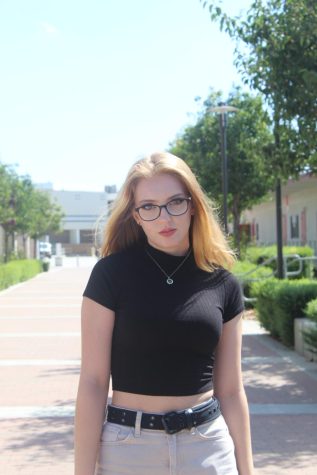
I have 4 cats, I’ve met Kill Bill:The Rapper, and I’ve seen Billy Joel in Vegas



